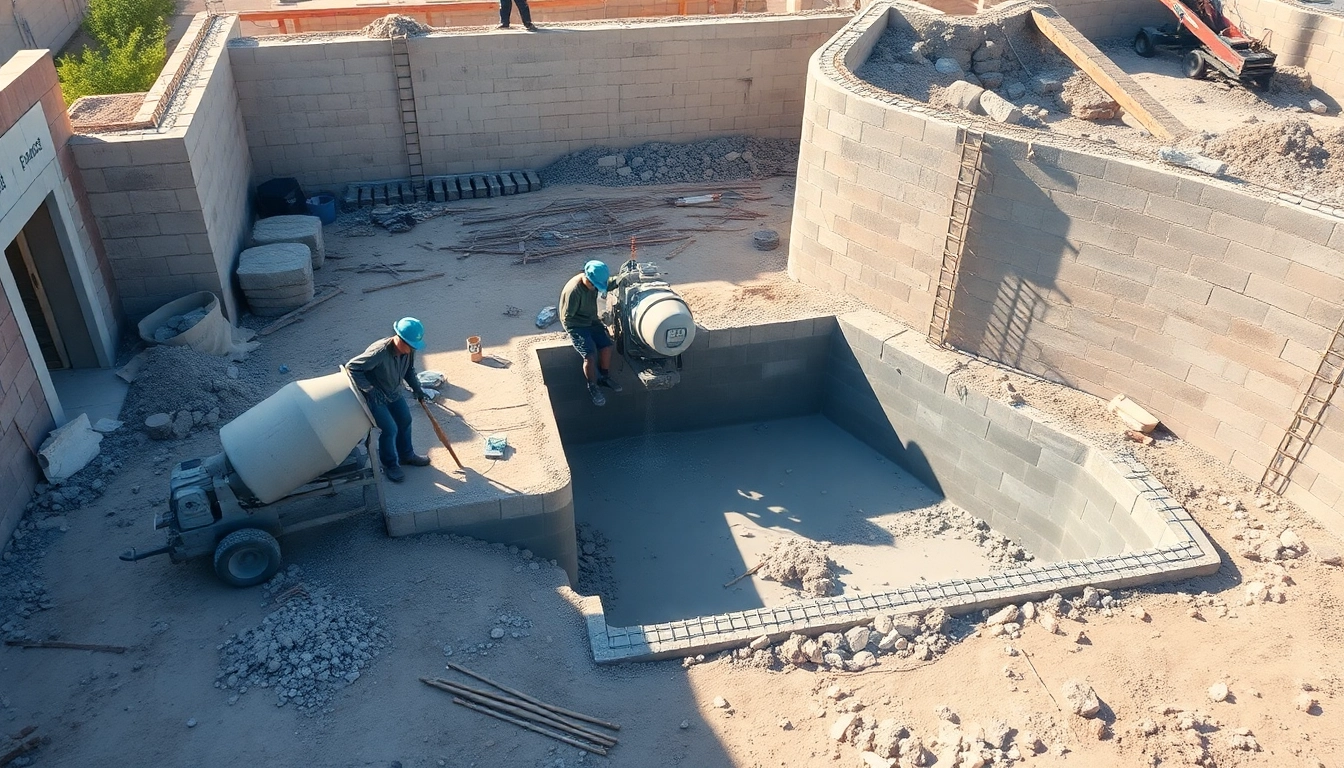Understanding Infusion Resins
What are Infusion Resins?
Infusion resins are specialized formulations of plastics that are designed to be used in the composite manufacturing process known as resin infusion. This technique involves drawing a vacuum on a mold that contains fabric layers (often fiberglass or carbon fiber), enabling liquid resin to be drawn into the dry fibers, ultimately creating a solid composite part. Primarily used in industries such as aerospace, automotive, marine, and wind energy, infusion resins offer a range of properties including low viscosity for better flow, high strength, and clarity. These resins can be tailored to meet specific performance criteria, making them highly versatile for various applications. In terms of chemical composition, most infusion resins are epoxy-based due to their superior bonding properties, although polyester options exist for applications that do not require as stringent performance standards. If you’re looking for robust and efficient solutions in composite manufacturing, infusion resins are an excellent choice.
Applications of Infusion Resins
Infusion resins are employed across a variety of sectors due to their enhanced mechanical properties and ease of application. Some common applications include:
- Aerospace Components: Infusion resins are used to manufacture lightweight yet durable components like wing structures, fuselage sections, and propellers.
- Automotive Parts: Modern vehicles increasingly rely on composites for body panels, structural components, and even interior features, all benefiting from the strength-to-weight ratios provided by infusion resins.
- Marine Craft: The infusion process creates robust hulls and decks, demonstrating high performance in harsh marine environments.
- Wind Energy Blades: The blades used in wind turbines are often made from composites for their exceptional strength and lightness, with infusion resins being a popular choice for their manufacturing.
Benefits of Using Infusion Resins
The advantages of using infusion resins are numerous:
- Low Viscosity: Allows for easier flow into complex molds without creating air pockets.
- Control Over Material Distribution: Provides better control during the infusion process, ensuring even distribution of resin within the fibers.
- Mechanical Properties: Offers high tensile strength and rigidity, which are critical in high-performance applications.
- Surface Finish: Results in a smoother finish that reduces post-processing time and costs.
- Transparency: Certain formulations can provide a clear, glossy finish, beneficial in applications where aesthetics are important.
- Sustainability: Many manufacturers are now developing bio-based infusion resins to minimize environmental impact.
Types of Infusion Resins
Polyester vs. Epoxy Infusion Resins
When it comes to infusion resins, two main types dominate the market: polyester and epoxy. Each type has unique advantages and is suitable for different applications.
- Polyester Resins: More cost-effective and easier to work with, polyester resins are often the go-to choice for simpler projects or where lower strength is acceptable. However, they typically exhibit lower mechanical properties and less chemical resistance compared to epoxies.
- Epoxy Resins: Epoxy infusion resins are favored in high-performance applications due to their superior bonding capabilities and mechanical strength. They are also more resistant to moisture, heat, and chemicals, making them suitable for automotive and aerospace components.
Bio-Based Infusion Resins
With growing environmental awareness, the development of bio-based infusion resins has gained traction. These resins are partially or fully made from renewable resources, providing a sustainable alternative to traditional petroleum-based products. Bio-based infusion resins often maintain comparable mechanical properties while reducing the carbon footprint associated with production. Companies are exploring various sources for bio-resins, including agricultural by-products and plant oils, further advancing sustainability in the composite industry.
Low-Viscosity Infusion Resins
Low-viscosity infusion resins are specifically formulated for the infusion process. Their reduced viscosity allows for better penetration and flow into complex fabrics and molds, ensuring a complete fill and strong bond within the composite structure. This type of resin is essential for applications that require intricate shapes or tight tolerances, such as in aerospace components.
Application Techniques for Infusion Resins
Preparing the Mold for Infusion
Successful infusion begins with meticulous mold preparation. This includes:
- Mold Cleaning: Ensure that the mold surface is pristine to prevent any contamination that could affect bonding.
- Mold Release Agents: Apply appropriate release agents to facilitate easy demolding without damaging the composite part.
- Dry Fabric Layup: Carefully place the reinforcement fabrics in the mold without creating wrinkling or misalignment, as this will affect the final product.
Resin Mixing and Process Steps
After mold preparation, the next steps involve resin mixing and infusion:
- Mixing: Follow the manufacturer’s guidelines for mixing resin with hardener. Ensure a homogeneous mixture to achieve consistent curing throughout the composite.
- Vacuum Application: Before introducing the resin, apply a vacuum to remove any trapped air within the mold and fabric, which can lead to defects like voids or delamination.
- Infusion: Once a stable vacuum is achieved, initiate the resin infusion process. The resin should be introduced through a strategically placed inlet, allowing it to flow and saturate the fabric uniformly.
Post-Infusion Finishing Techniques
After the infusion process is complete, several post-processing steps are essential:
- Curing: Resins typically require a specific curing temperature and time to achieve their intended mechanical properties.
- Demolding: Carefully demold the finished part, using appropriate techniques to avoid any damage to the composite.
- Finishing: Surface finishing techniques such as sanding or coating may be necessary to achieve the desired aesthetic finish or to improve surface performance characteristics.
Challenges in Using Infusion Resins
Common Issues and Solutions
While infusion resins offer many benefits, there are several challenges that manufacturers may face during the infusion process:
- Air Voids: These can occur if the fabric isn’t adequately saturated. Solutions include adjusting the vacuum levels and ensuring proper resin flow rates.
- Inconsistent Curing: Variations in temperature can lead to non-uniform curing. It is crucial to monitor the environment and maintain consistent conditions throughout the process.
- Fabric Misalignment: Careful handling and positioning of the fabric before infusion can help prevent this issue. Using alignment guides can also assist in maintaining proper placement.
Environmental Factors Affecting Infusion
Environmental conditions such as humidity and temperature can influence the infusion process and the final properties of the composite material:
- Temperature Variations: High temperatures can accelerate curing but may also lead to premature thickening of the resin, while low temperatures could slow down the process, leading to incomplete curing.
- Humidity Levels: Elevated humidity can introduce moisture into the resin system, potentially affecting the adhesion qualities and resulting in reduced mechanical properties. Monitoring ambient conditions and using moisture control methods is essential for delivering high-quality parts.
Material Performance and Testing Standards
To ensure that infusion resins meet industry standards, rigorous testing is crucial. Performance metrics for composites include:
- Tensile Strength: Measures the maximum stress before failure, indicating the material’s ability to withstand forces.
- Flexural Strength: Determines how much force the material can resist when bent.
- Impact Resistance: Assesses the material’s ability to absorb energy and withstand sudden impacts without fracturing.
Future Trends in Infusion Resins
Advancements in Resin Formulation
The development of advanced resin formulations is crucial for enhancing the performance characteristics of infusion resins. Researchers are focusing on improving the properties of existing chemistries and exploring new formulations that enhance strength, thermal resistance, and flexibility. Modified epoxy systems and hybrid resins that combine the benefits of different materials are examples of how innovation is paving the way forward.
Impact of Sustainability on Infusion Resins
The push for sustainability is profoundly affecting the composite manufacturing landscape. Manufacturers are increasingly prioritizing eco-friendly practices, leading to the development of bio-based resins and recycling initiatives for composite materials. Sustainable approaches not only reduce environmental impact but can also lower production costs, creating a win-win for manufacturers and the planet.
Emerging Technologies in Composite Manufacturing
Technological advancements are revolutionizing composite manufacturing. New methods such as automated fiber placement (AFP) and robotic infusion techniques are gaining popularity. These technologies not only improve accuracy and repeatability but also reduce production time and labor costs. Integration with smart manufacturing systems, including real-time monitoring and analytics, will further optimize processes, ensuring manufacturers can meet quality and performance expectations while minimizing waste.


